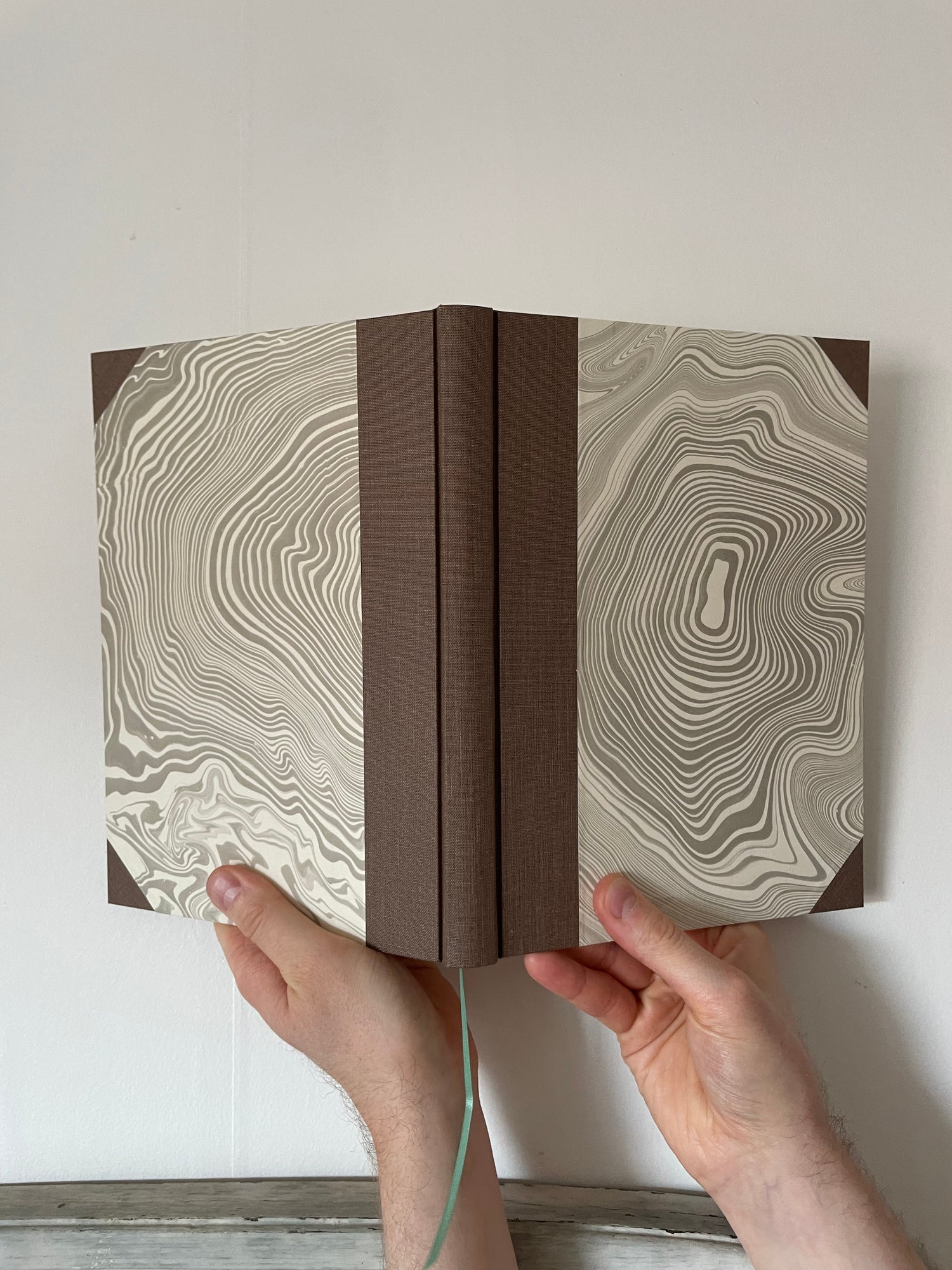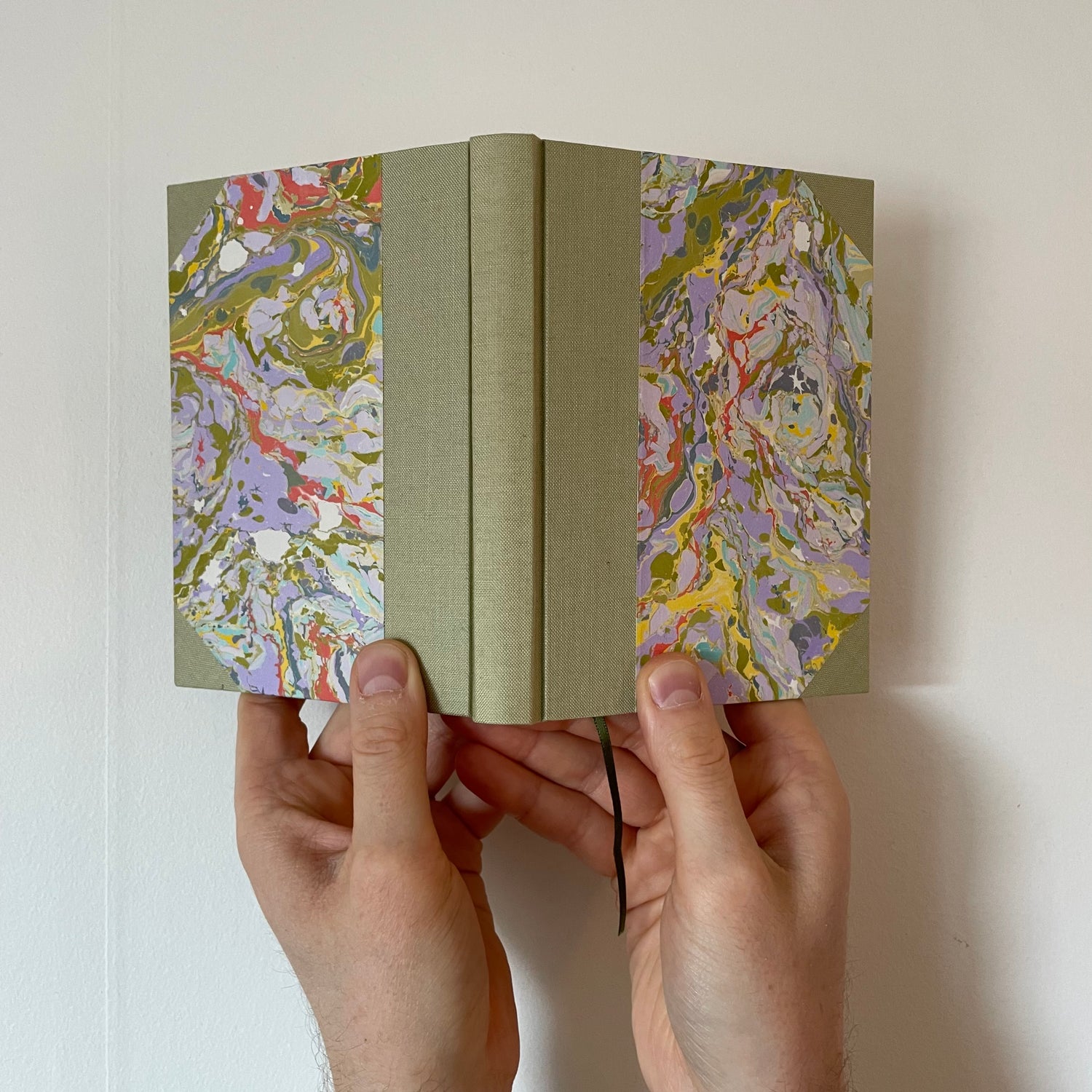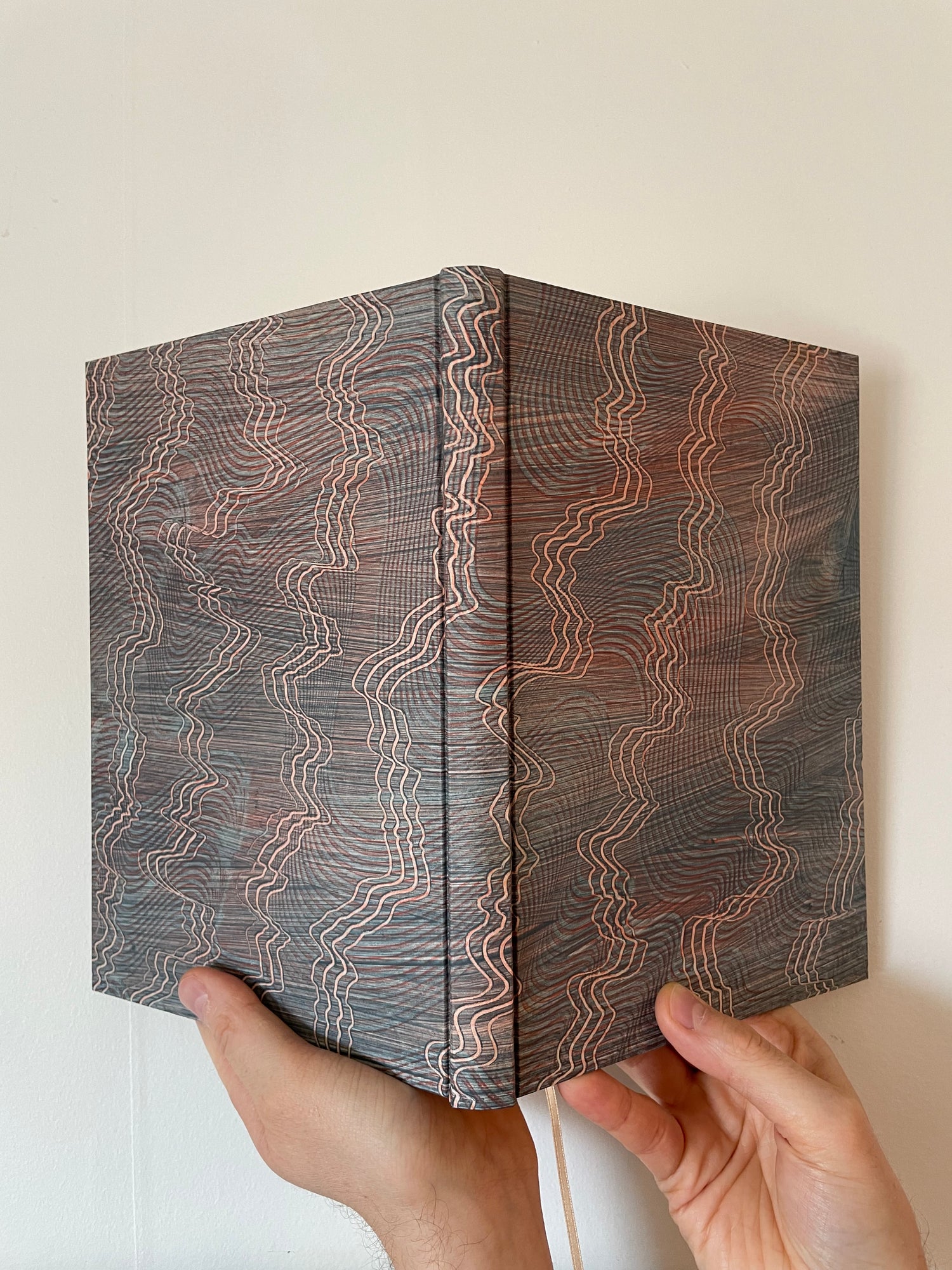Paper marbling
In the last years we've learned the mesmerizing craft of paper marbling, and now we make many of the marbled cover papers for our books ourselves.
At the beginning of 2024, we held our first marbling course at Leksands folkhögskola, where we covered Turkish marbling as well as suminagashi. We had so much fun and would love to teach marbling again! If you want to get in touch with us and book a class at your place, send us an email at hej@svartbrun.com
Below is a short presentation of the marbling techniques we work with!

Suminagashi
Suminagashi / 墨流し / is roughly translated to 'to let ink float' in Japanese and is the oldest form of paper marbling.
The special sumi ink floats directly on the surface of the water and the print reflects the movement of the water.
Suminagashi is traditionally made on japanese washi paper / 和紙 /. We use both washi and European papers in our practice.

Turkish marbling
Turkish marbling, or ebru, is a development of the older suminagashi technique. In Turkish marbling, the water is thickened and paint is sprinkled on the bath with brushes. Different patterns can then be made by using awls and combs.
We love the diversity of this marbling technique and enjoy making both traditional patterns as well as working completely intuitively.

Paste paper
Paste paper is a painting technique and doesn't involve dipping the paper in a bath, as in suminagashi or ebru.
The paint or pigment is prepared by mixing and diluting in paste, and is painted, combed and manipulated with fingers or other tools on the surface of the paper.
We like to make at least two layers of marbling which creates depth and nuances to the design.
